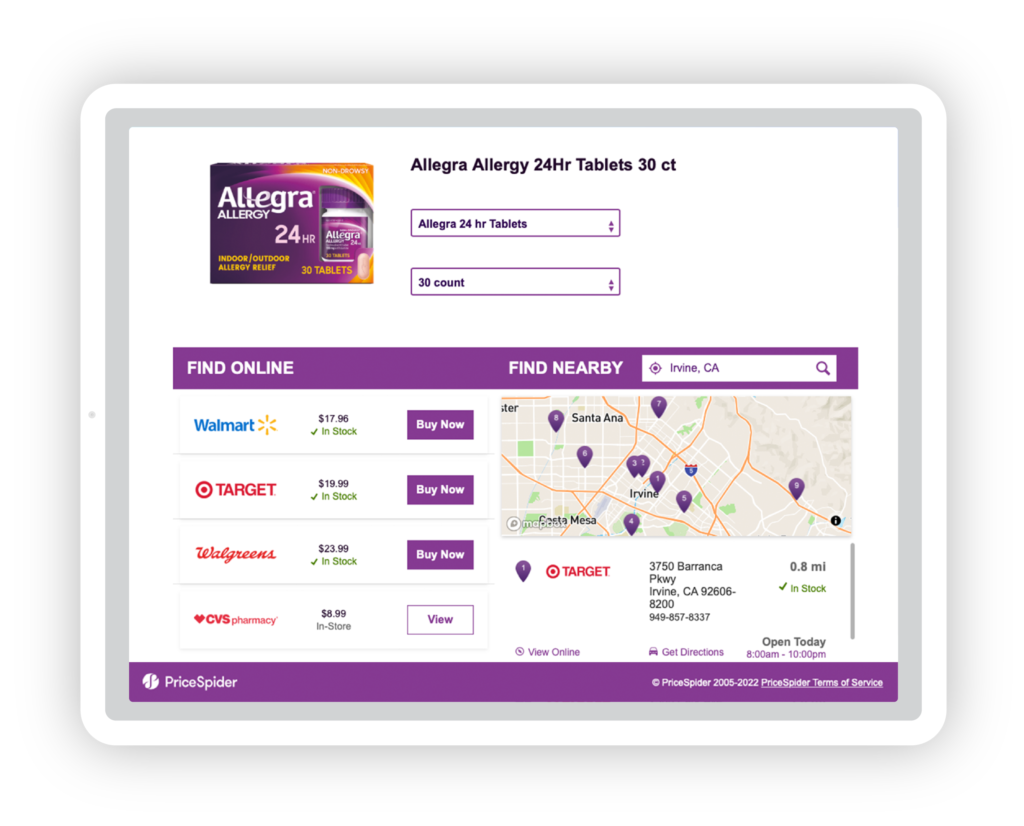Years ago, if you’d told someone they could buy prescription or over the counter drugs online, they might’ve thought you were crazy. But today, it seems strange if you can’t buy something online that’s available in a store. People buy groceries, alcohol, furniture, plants, pets, prescription glasses, and all sorts of goods that have strict regulations or can be inconvenient to ship online.
E-pharmacy isn’t some obscure little niche, either. It’s a multi-billion dollar industry that’s projected to reach over $177 billion by 2026. For over 20 years, websites have been popping up to meet this need—and now there are more than 400 in the US alone. Pharmaceutical ecommerce has an established market. But it has some established challenges, too.
Let’s take a look at what makes this product category so successful in digital channels, as well as the challenges brands face in this space and the opportunities for innovation.
Key drivers in the pharma ecommerce market
Whether you’ve been in the e-pharmacy business for years, or you’re just beginning to sell medications online, it’s worth examining the factors that make this category uniquely viable. Here are some of the reasons pharmaceutical ecommerce is thriving.
Consumers get better access to medications they need
After a doctor’s appointment, filling a prescription at a physical pharmacy could require planning transportation across town or waiting days to get a prescription filled. You have to coordinate your schedule around the pharmacy’s hours. And if you need the prescription refilled regularly, you could have to make this trip monthly, or even every few days.
Consumers can access an online pharmacy from anywhere at any time. They can fill a prescription before they’ve even left the doctor’s office, or right after hanging up from a telemedicine appointment. And getting a refill is just as convenient.
Customers enjoy greater privacy
Your personal health is extremely private. No matter how discrete a physical pharmacy is, it’s uncomfortable to talk about medical conditions, medications, and symptoms when other customers are within earshot. Not to mention, you may have to carry around those prescription drugs in public for a while.
Pharmacy ecommerce lets people fill prescriptions from the privacy of their home. And that makes the entire process more comfortable.
It’s far easier to compare prices
Prescription drug prices can vary widely from one brand or pharmacist to another. Even within the same zip code, the exact same medication can cost several times more depending on which pharmacist you use. When you walk into a pharmacy, you don’t really know how much they’ve marked up the price or what your copay will be. And by then, it’s a little late to “shop around” for a more affordable pharmacy.
With pharmaceutical ecommerce, changing pharmacies doesn’t mean adding 30 minutes to your trip or wasting time in line. There are even digital solutions that help consumers compare drug prices on multiple websites from a single location. For example, if a generic drug company uses PriceSpider’s Where to Buy, consumers can compare pharmacy prices at-a-glance.
Challenges with pharmaceutical ecommerce

Prescription drugs are highly regulated, and the competition works a little differently in this industry. This can make e-pharmacy uniquely challenging.
Leading brands have a significant head start
When a drug company patents a drug, they get about 10 years of runway to corner the market before other companies can produce “generic” drugs that are exactly the same. By then, the brand name has effectively become the name of the drug in consumer’s minds—like how people ask for Tylenol instead of acetaminophen. This built-in top-of-mind awareness makes it difficult for other brands to penetrate the market.
Package theft
Any time you’re shipping products, there are going to be moments where they’re left unattended or stored in environments where someone could steal them. When you’re fulfilling orders for prescription drugs, package theft can mean someone doesn’t get life-saving medication and that controlled substances like opioids fall into the wrong hands.
Consumer trust
When you walk into a pharmacy, you don’t have to wonder if you’re getting “the real deal.” But as prescription drugs continue becoming increasingly available online, it’s vital that drug companies and e-pharmacists provide assurances of their products’ legitimacy.
Opportunities for ecommerce in the pharmaceutical industry
Even after more than 20 years, there’s still plenty of room for online pharmaceutical companies to innovate and improve. Here are some of the biggest opportunities.
Improving pharma B2B ecommerce
With better access to fluctuating pricing information, healthcare providers can make more informed decisions about drug purchases and change suppliers based on current rates, generating significant cost savings, some of which may pass to consumers.
Leveling the playing field
Through digital channels, it’s easier for consumers and providers to simply search for the medication they need and compare their options. Lesser-known brands can also penetrate the market quickly by creating helpful content that leads people to schedule appointments with their doctors or telemedicine visits through a partner provider.
In ecommerce, there are far more opportunities for unknown brands to establish touchpoints, build trust, highlight price differences, and level the playing field with name brand medications.
Streamlining the path to purchase
Pharma ecommerce has thrived on the convenience it provides. But as with all ecommerce product categories, convenience is still one of the main areas brands can compete in. And it’s important to remember that consumers aren’t just learning which brands they can trust—they’re learning which online pharmaceutical companies they can trust, too. So brands need to consider that consumers may have strong preferences for particular pharmacies, and they can’t force everyone into a single sales channel.
The solution? Let them see all their choices with Where to Buy. Where to Buy can help customers find local pharmacies or online options, and they can compare prices at-a-glance. Then they can make the selection that’s right for them.
Want to see how it works?

